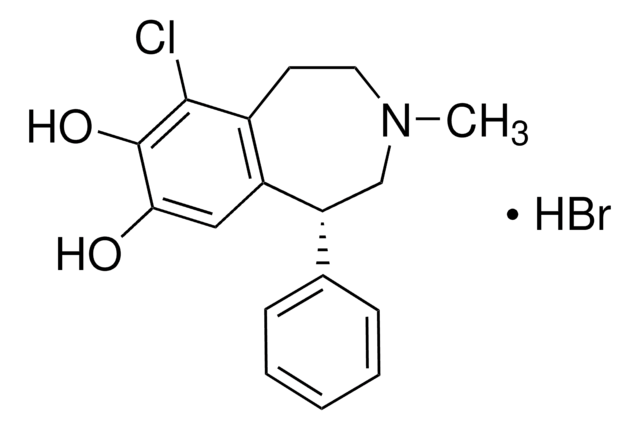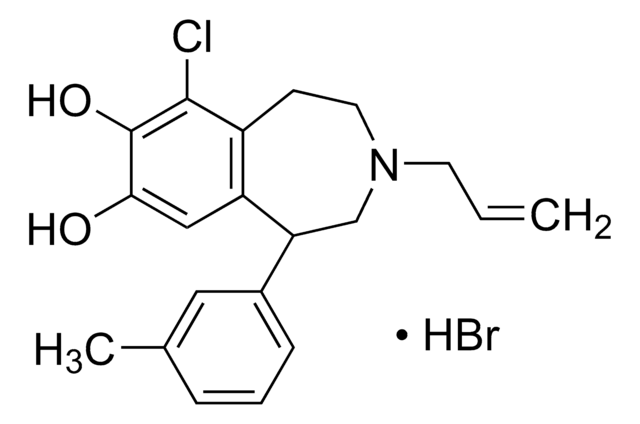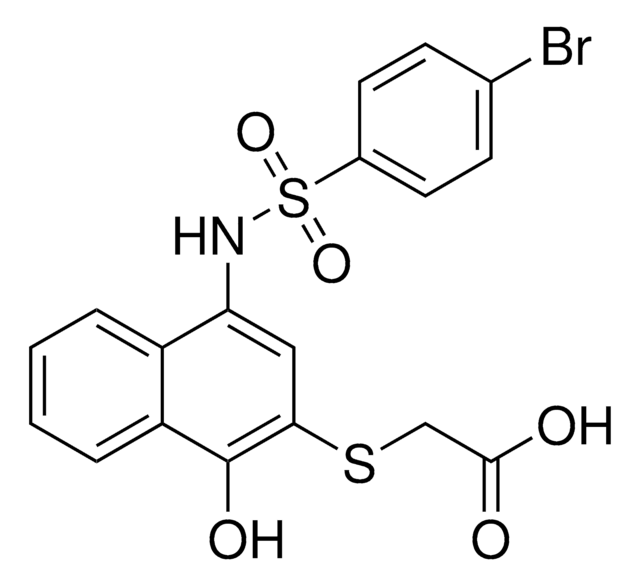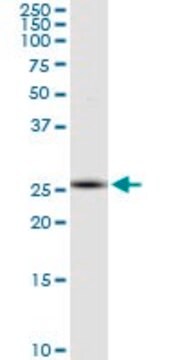S2816
SKF-83959 hydrobromide
≥98% (HPLC), solid
Synonyme(s) :
6-Chloro-7,8-dihydroxy-3-methyl-1-(3-methylphenyl)-2,3,4,5-tetrahydro-1H-3-benzazepine hydrobromide
Sélectionner une taille de conditionnement
272,00 $
Sélectionner une taille de conditionnement
About This Item
272,00 $
Produits recommandés
Niveau de qualité
Essai
≥98% (HPLC)
Forme
solid
Couleur
white
Solubilité
DMSO: >20 mg/mL
H2O: insoluble
Chaîne SMILES
Br[H].CN1CCc2c(Cl)c(O)c(O)cc2C(C1)c3cccc(C)c3
InChI
1S/C18H20ClNO2.BrH/c1-11-4-3-5-12(8-11)15-10-20(2)7-6-13-14(15)9-16(21)18(22)17(13)19;/h3-5,8-9,15,21-22H,6-7,10H2,1-2H3;1H
Clé InChI
FHYWNBUFNGHNCP-UHFFFAOYSA-N
Informations sur le gène
human ... DRD1(1812)
Application
Actions biochimiques/physiologiques
Code de la classe de stockage
11 - Combustible Solids
Classe de danger pour l'eau (WGK)
WGK 3
Point d'éclair (°F)
Not applicable
Point d'éclair (°C)
Not applicable
Équipement de protection individuelle
Eyeshields, Gloves, type N95 (US)
Faites votre choix parmi les versions les plus récentes :
Certificats d'analyse (COA)
Vous ne trouvez pas la bonne version ?
Si vous avez besoin d'une version particulière, vous pouvez rechercher un certificat spécifique par le numéro de lot.
Déjà en possession de ce produit ?
Retrouvez la documentation relative aux produits que vous avez récemment achetés dans la Bibliothèque de documents.
Active Filters
Notre équipe de scientifiques dispose d'une expérience dans tous les secteurs de la recherche, notamment en sciences de la vie, science des matériaux, synthèse chimique, chromatographie, analyse et dans de nombreux autres domaines..
Contacter notre Service technique








